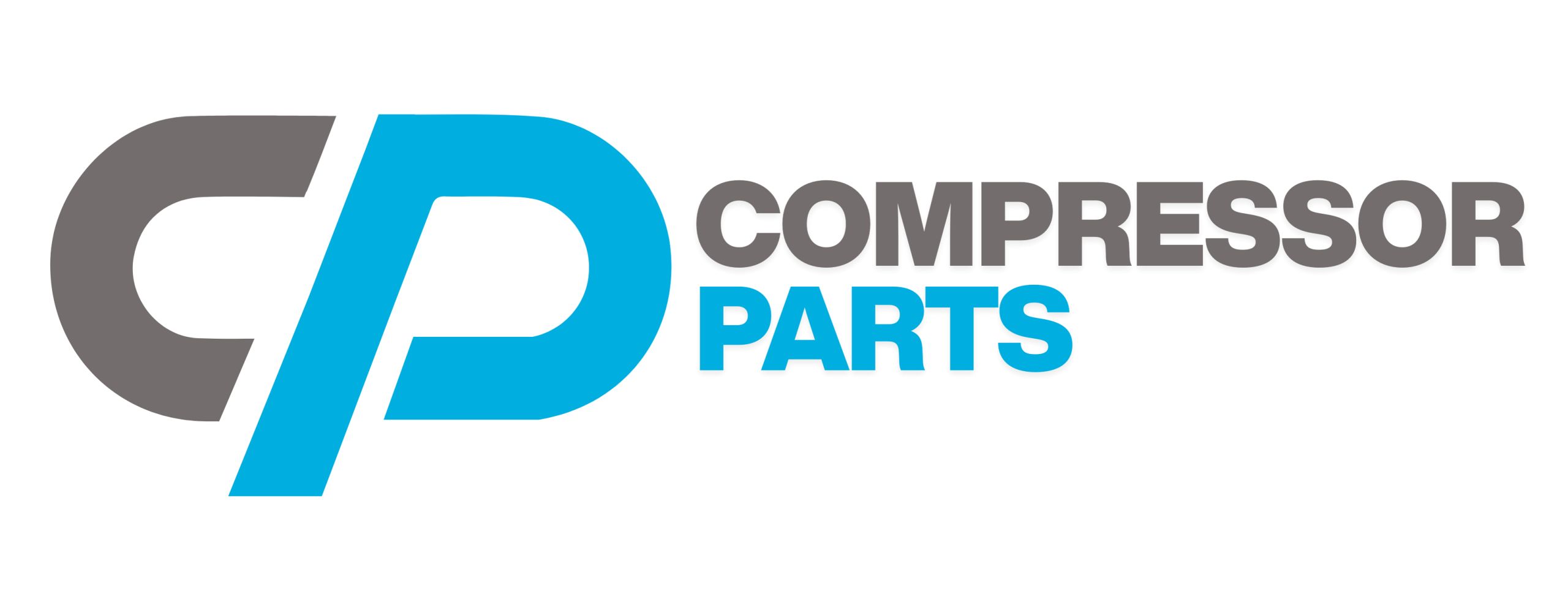Piston vs Screw Air Compressors – What’s the Difference?
When buying or maintaining a compressor, one of the biggest questions is whether to choose a piston or a screw machine. Both generate compressed air efficiently, yet they differ in how they compress, the noise they produce and the maintenance they require. This guide breaks down the key differences, explains which technology suits each application and lists the common service parts you’ll need for both.

1. The Two Compression Principles
Piston (Reciprocating) Compressors
Piston compressors use a crankshaft and cylinder assembly similar to an engine. Air is drawn in through a valve, compressed by a moving piston and discharged into a receiver tank. They’re simple, robust and inexpensive to maintain, making them ideal for garages, tyre shops and small workshops.
Rotary Screw Compressors
Rotary screw compressors use two meshing helical rotors. Air is trapped between them and compressed continuously as the rotors turn. Because the process is smooth and oil-cooled, screw units run quietly and deliver constant pressure for industrial use.
2. Performance Comparison
| Feature | Piston Compressor | Screw Compressor |
|---|---|---|
| Operation | Intermittent (on/off) | Continuous |
| Duty Cycle | 60 % typical | 100 % capable |
| Noise Level | 80–95 dB(A) | 60–70 dB(A) |
| Maintenance | Frequent oil & valve service | Filter & oil change every 2 000–4 000 h |
| Initial Cost | Lower | Higher |
| Energy Efficiency | Lower at high demand | High for continuous load |
3. Advantages of Each Type
- Piston: Low purchase cost, simple design, tolerant to harsh conditions, easy DIY maintenance.
- Screw: Continuous output, quieter, more efficient for long running hours, automatic condensate control.
4. Typical Applications
- Piston: Tyre inflation, spray painting, nail guns, small production tools.
- Screw: CNC machines, packaging lines, food processing, general manufacturing.
- Oil-Free Scroll or Piston: Dental surgeries, laboratories and clean rooms.
5. Maintenance Differences
Piston Compressor Maintenance
- Change oil every 250–500 hours (ISO 100 non-detergent).
- Replace intake filters frequently (every 250 hours).
- Inspect valve plates and gaskets yearly.
- Drain receiver daily or install an auto drain.
Screw Compressor Maintenance
- Change oil & oil filter every 2 000–4 000 hours.
- Replace air/oil separator every 4 000–8 000 hours.
- Clean coolers quarterly and inspect belts.
- Check for leaks and vibration weekly.
6. Energy and Cost Considerations
A screw compressor costs more initially but often pays back within two years through reduced electricity usage. In the UK, electricity averages 25–30 p/kWh; cutting even 5 % of energy waste can save hundreds annually. Keep filters clean and maintain proper pressure settings (typically 7–10 bar for workshop use).
7. Lifespan and Reliability
Piston compressors last 5 000–10 000 hours with proper care; screws typically exceed 40 000 hours before overhaul. Continuous oil circulation keeps screw elements cooler and reduces component wear. Always use genuine or high-quality equivalent service kits for optimum life.
8. Noise and Installation
- Piston units are noisy; place them in a separate room or acoustic enclosure.
- Screw compressors like the ABAC Genesis or Atlas Copco GX series include built-in enclosures reducing noise to 60 dB(A).
- Install anti-vibration mounts and flexible hoses (see range).
9. Air Quality and Treatment
Both compressor types need filters and dryers. Screw compressors usually include an integrated after-cooler and moisture separator. For spray-painting or dental use, add inline coalescing and carbon filters to ensure clean, dry air.
10. Environmental Factors
Piston compressors consume more oil per hour; screws produce more condensate. Always use an oil-water separator to stay compliant with UK waste regulations.
11. Choosing Between Them
If your compressor runs less than 4 hours a day, a piston model (ABAC B-Series, FINI MK, NUAIR NB) is ideal. For 24/7 or automated production, a screw machine (ABAC Genesis, Atlas Copco GA/GX, HPS Range) provides stable pressure, quieter operation and lower total cost of ownership.
12. Upgrade Paths
Many UK users transition from piston to screw as air demand grows. You can reuse your existing receiver and pipework—just add an after-cooler and proper filtration. Consider energy-saving VSD screw models that match motor speed to demand.
13. Summary Table
| Criteria | Best Choice |
|---|---|
| Light, intermittent use | Piston |
| Continuous operation | Screw |
| Lowest noise | Screw |
| Lowest purchase price | Piston |
| Lowest lifetime cost | Screw |
14. Example Models and Parts
- ABAC B5900B 10 bar: Intake Filter 9056100, Oil ISO 100 ND, Valve Plate B59-K.
- ABAC Genesis 7.5 10 bar: Oil Filter 6211472450, Separator 6221372450.
- Atlas Copco GX 7: Filter 1621935600, Oil Roto Xtend ISO 46.
15. Pros & Cons Quick Reference
- Piston Pros: Cheap, rugged, simple.
- Piston Cons: Noisy, limited duty cycle.
- Screw Pros: Efficient, quiet, long life.
- Screw Cons: Higher initial cost, needs clean environment.
FAQs
Which compressor type is best for garages?
Piston models such as the ABAC Pro A39B or FINI MK 102 are cost-effective and reliable for intermittent tasks.
Do screw compressors need oil changes?
Yes – every 2 000–4 000 hours, using ISO 46 synthetic oil and a new oil filter each time.
Is it worth upgrading from piston to screw?
If your air demand exceeds 4 hours/day or you need quieter operation, yes – the savings in energy and maintenance justify the upgrade.
See also: How to Read Your Compressor Nameplate or Serial Number
